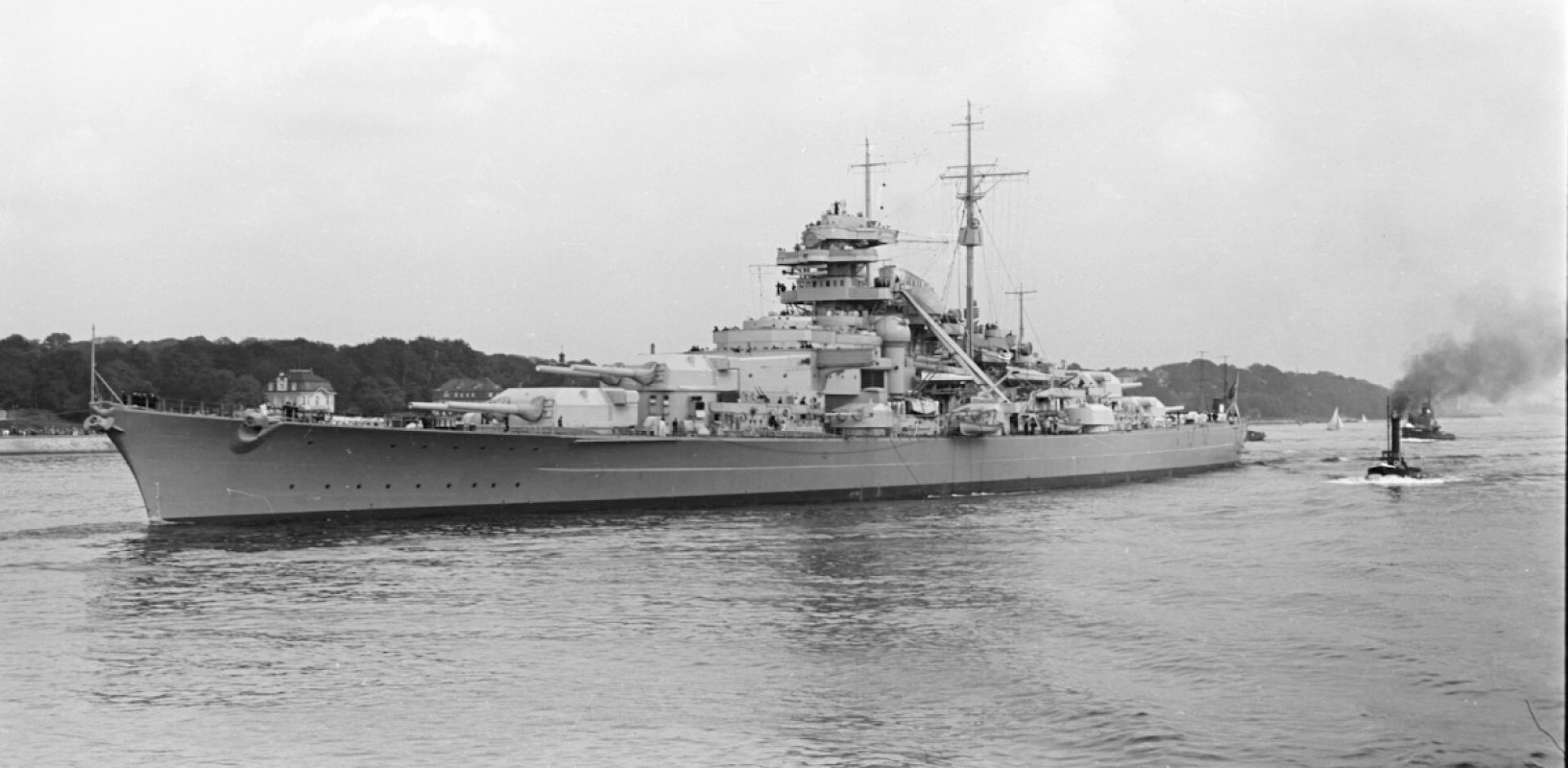
Bismarck sinking

Bismarck. Image via Wikipedia.
Bismarck was the first of two Bismarck-class battleships built for Nazi Germany’s Kriegsmarine. Named after Chancellor Otto von Bismarck, the battleship was launched on 14 February 1939, measured 241 meters in length and weighed 41,700 tons. Bismarck was involved in a battle with The Prince of Wales, an allied battleship, was badly damaged, and became unmanoeuvrable.
Ultimately, the ship was sank, and only 118 from its crew of over 2,200 survived. Hours later, Oskar was found floating on a board and picked from the water, the only survivor to be rescued by the homeward-bound British destroyer HMS Cossack. The crew didn’t know the cat’s name and they named him Oscar. It was then that Unsinkable Sam switched sides from the Nazi to the Allied forces, but his luck didn’t change so much…
HMS Cossack sinking…

HMS Cossack
The cat served on board Cossack for the next few months as the ship carried out convoy escort duties in the Mediterranean and north Atlantic. Things went pretty smoothly for that period, but ultimately, the destroyer was badly damaged by a torpedo, and 139 of its crew were killed.
On 27 October 1941, a day after the tow was slipped, Cossack sank to the west of Gibraltar, and Oscar was found clinging to a piece of plank; he made it and was brought to the shore establishment in Gibraltar. When they learned what happened, British officers changed his name to Unsinkable Sam – a fitting name for a cat that survived the sinking of two warships. But his adventure wasn’t over quite yet…
…and HMS Ark Royal sinking…

Unsinkable Sam was then adopted by the crew of the HMS Ark Royal – ironically, a ship that was instrumental in sinking the Bismarck. Ark Royal survived several near misses and gained a reputation as a ‘lucky ship’. The Germans incorrectly reported her as sunk on multiple occasions – the right place for Sam to be. But luck didn’t last, and when returning from Malta on 14 November 1941, this ship too was torpedoed, this time by an U-boat.
This time, Sam was found clinging to a floating plank by a motor launch, and described as “angry but quite unharmed”. But by this time, Sam had enough. He was transferred to a job on land and spent his days hunting mice in the building of the Governor General in Gibraltar. Eventually, he was sent back to the UK where he remained at a ‘Home for Sailors’ in Belfast until the end of his earthly days.
Unsinkable Legacy
Painting of Unsinkable Sam.
Some people question the veridicity of Sam’s story, classing it as a ‘sea story’. Surviving the Bismarck sinking seems especially unlikely, as salvaging the crew was done in desperate conditions, but even so, I could imagine a British soldier taking the time to save the cat.



I don’t know if the story is true or not, but we’ll just take it as it is for now. Take it as a story, take it as a legend or a myth – Unsinkable Sam survived the destruction of three warship in World War II and lived happily until 1955. A pastel portrait of Sam (titled “Oscar, the Bismarck’s Cat”) by the artist Georgina Shaw-Baker is in the possession of the National Maritime Museum, Greenwich. Oh, and as for Sam’s legacy – it goes to show that even in the most dire of circumstances, even as everything around you is crumbling down, you can still cling on to a piece of wood, get rescued, and move on to another ship and start over again. Or it goes to show that cats really do have 9 lives.
Không có nhận xét nào:
Đăng nhận xét